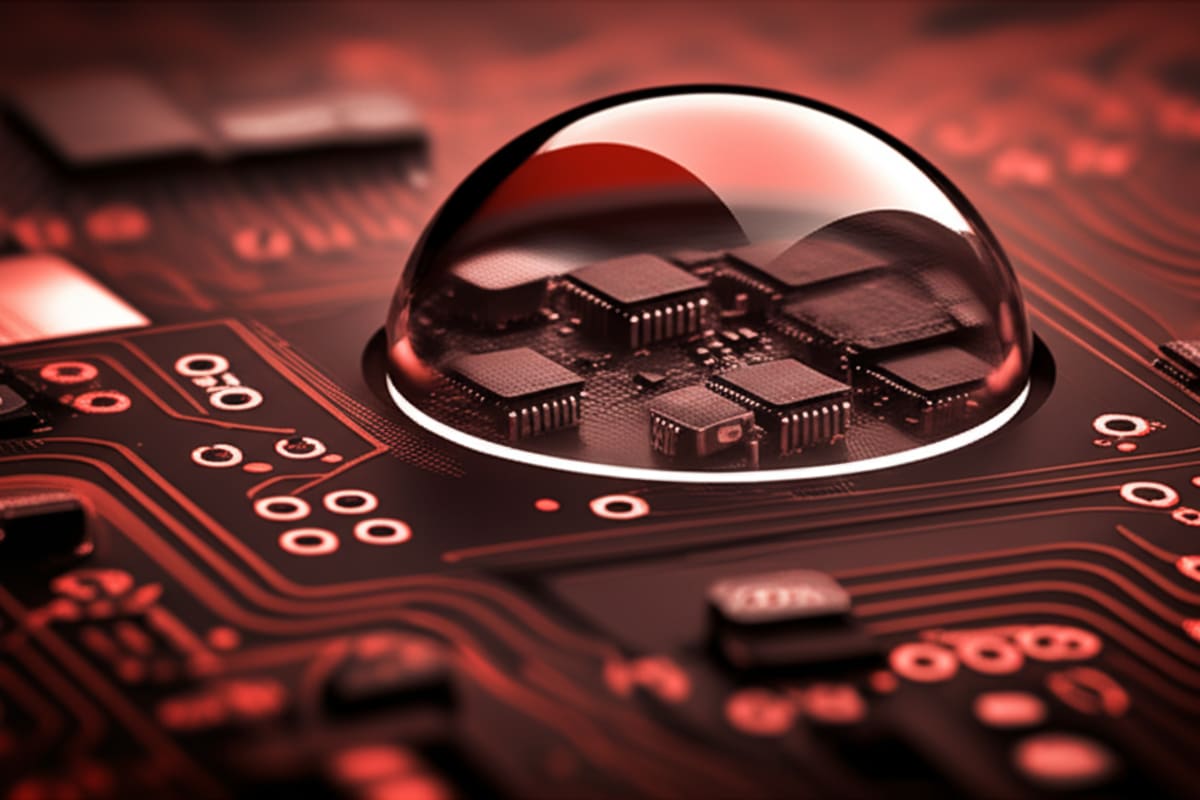SoftBank's Bold Return: $5.4 Billion Bet on AI-Powered Robots

SoftBank's Bold Return: $5. 4 Billion Bet on AI-Powered Robots Reshapes Future of Industry Remember Pepper.
Background
That often-overhyped, sometimes-awkward 'emotional robot' that, despite its adorable face, didn't quite take the world by storm a few years back.
Well, one of its key developers, the ever-ambitious Japanese conglomerate SoftBank, apparently hasn't given up on its robot dreams
Far from it, in fact. They're making a colossal bet, diving back into the bot business with a staggering $5.
4 billion acquisition of ABB’s robotics division. This isn't just a casual dip of the toe; it's a full-on cannonball, signaling a profound strategic shift.
The deal, which still needs the nod from various regulators (because, you know, $5.
4 billion isn't pocket change), marks a significant escalation of SoftBank's presence in the burgeoning robotics sector
It’s a portfolio already robust with stakes in promising outfits like Skild, AutoStore Holdings, and Agile Robots. But this latest move.
This feels different.
It feels like a statement – a bold declaration that SoftBank is not only back in the robotics game but intends to be a dominant force, particularly in the realm of industrial automation
Masayoshi Son's Grand Vision: The Rise of 'Physical AI' “SoftBank’s next frontier is Physical AI,” Son declared, brimming with his characteristic blend of confidence and ambition, promising a “groundbreaking evolution that will propel humanity forward
” For a company that's seen its share of ups and downs – from the dazzling heights of Alibaba's IPO to the tumultuous ride with WeWork – SoftBank’s founder, Masayoshi Son, remains an unwavering visionary
And his latest frontier. 'Physical AI,' as he so eloquently puts it.
Lofty words, perhaps, but when Son speaks about the future of technology, people tend to listen, often with a mix of excitement and a little bit of trepidation
Robots, it turns out, are just one of four critical pillars in Son’s grand design to not just participate in, but outright dominate, the AI industry
He's not content with mere intelligence; he's aiming for 'super intelligent AI.
' To fuel this vision, SoftBank is also pouring immense capital into: Advanced Chips: The very brains of the operation, providing the processing power needed for sophisticated AI
Vast Data Centers: The foundational infrastructure to process the unimaginable amounts of information these AIs will generate and learn from.
Energy Solutions: The lifeblood of this new technological ecosystem, ensuring sustainable power for ever-expanding AI demands
Generative AI Companies: Actively scouting and funding companies at the very “forefront of generative AI,” the kind that can create everything from text to images, and perhaps, even new robot designs
It’s an interconnected web, each piece feeding and strengthening the others, all designed to build an ecosystem where intelligence isn't just digital, but tangible and active in the physical world
A Strategic Move Beyond 'Emotional Robots' Now, let's talk about the 'why' behind this particular acquisition. ABB, a Swiss-Swedish multinational, isn't exactly a newcomer to the robotics scene.
They're a long-established powerhouse in industrial automation, known for their robust, reliable, and highly efficient robots that are staples in factories and manufacturing plants worldwide
Think giant robotic arms welding cars, precisely placing components, or handling heavy payloads – the kind of work that’s less about charming customers and more about sheer productivity and precision
This is a stark contrast to Pepper's service-oriented, somewhat whimsical approach.
What SoftBank is getting here isn't just a piece of the pie; it’s a fully operational, highly respected, and deeply ingrained player in the industrial robotics market
This isn't about starting from scratch. It's about immediately gaining a vast portfolio of proven technology, a global customer base, and decades of engineering expertise.
It allows SoftBank to rapidly scale its 'Physical AI' ambitions beyond just funding startups, giving them direct control over a critical manufacturing arm that can bring their AI innovations to life in the physical world
This acquisition effectively transforms SoftBank from a venture capital firm with robotics interests into a direct player in the global industrial automation market
The Southeast Asian Crossroads: Opportunities and Challenges for the Region So, what does this mean for you, and for us, particularly here in Southeast Asia. The implications are significant.
Southeast Asia, with its dynamic economies and robust manufacturing sectors, stands at a crucial crossroads.
Countries like Vietnam, Thailand, Malaysia, Indonesia, and the Philippines have long been manufacturing powerhouses, relying on a skilled but often labor-intensive workforce
The increased adoption of advanced industrial robots, spurred by investments like SoftBank’s, could bring a wave of both opportunities and challenges.
Boosting Productivity and Attracting Investment On one hand, greater automation could dramatically boost productivity, efficiency, and quality in manufacturing
This could help regional industries stay competitive on a global scale, attracting more foreign direct investment (FDI) and fostering economic growth.
We could see the rise of more sophisticated 'smart factories' that operate 24/7 with minimal human intervention, leading to cheaper goods, faster production cycles, and a higher standard of precision
Imagine factories in Vietnam producing electronics with unparalleled speed and accuracy, or automotive plants in Thailand achieving new levels of operational efficiency thanks to advanced robotics
It also opens doors for new, high-skilled jobs in robotics maintenance, AI programming, system integration, and data analytics – roles that require a different kind of expertise than traditional factory work
This presents an exciting opportunity for the region to climb the value chain, moving beyond pure labor arbitrage to become centers of advanced technological application and innovation
Addressing Job Displacement and the Need for Reskilling However, there’s also the very real concern about job displacement
As robots become more capable and cost-effective, certain types of manual labor, particularly repetitive tasks in manufacturing and logistics, might become redundant
This isn't a new phenomenon, but the speed and scale of AI-driven automation could be unprecedented
Industries from garment manufacturing in Cambodia to electronics assembly in Malaysia could see significant shifts in their workforce requirements.
Governments, educational institutions, and businesses across the region will need to proactively address this by investing heavily in reskilling and upskilling programs
The focus must be on preparing the workforce for the jobs of tomorrow, not just today.
This means a concerted effort to teach digital literacy, robotics maintenance, AI principles, and other future-proof skills
Without such foresight, the technological advancement could exacerbate economic inequalities within our communities.
A Regional Technological 'Arms Race' Moreover, the push for 'Physical AI' could spark a regional arms race, albeit a technological one
Other major players and local enterprises might feel compelled to ramp up their own investments in robotics and AI to avoid being left behind.
This could accelerate technological innovation within Southeast Asia, creating new ecosystems of AI developers, robot manufacturers, and automation service providers
Consider, for instance, a future where advanced logistics robots streamline operations in bustling ports like Singapore, making them even more efficient global hubs
Or where AI-powered agricultural robots revolutionize farming in Thailand's rice paddies, improving yields and sustainability
This dynamic presents a unique opportunity for collaboration among ASEAN nations, pooling resources and expertise to develop regional solutions that cater to the specific needs and challenges of our diverse economies
The integration of AI and robotics isn't just a global trend; it's a localised transformation with profound implications for how Southeast Asia positions itself in the 21st-century global economy
Looking Ahead: Humanity's Physical AI Partners Masayoshi Son’s vision isn't just about building better robots; it's about integrating intelligence into every corner of our physical world
From smart homes to autonomous factories, and perhaps even to cities that respond dynamically to our needs, 'Physical AI' promises to reshape how we live and work
4 billion bet on ABB's robotics division isn't merely an investment in machinery; it's a profound declaration of intent.
It's SoftBank saying, loud and clear, that despite past stumbles, they're ready to lead the charge into a future where robots aren't just tools, but intelligent, physical partners in humanity's ongoing evolution
Whether it's the 'groundbreaking evolution' Son envisions, or another challenging chapter in the story of human-robot interaction, one thing's for sure: SoftBank is making sure we pay attention
This colossal investment by a major Japanese conglomerate underscores a global race for AI dominance, extending beyond digital interfaces into the physical world
This shift towards industrial automation holds particular relevance for Southeast Asian economies, compelling us to adapt and innovate to harness the full potential of 'Physical AI'
The future, it seems, is not just intelligent; it's also wonderfully, powerfully physical
